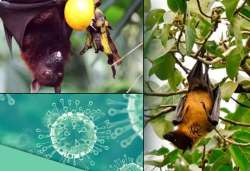Nipah scare: How a Malaysian doctor discovered the deadly virus
In 1999, pig farmers in Malaysia's Sungai Nipah were diagnosed with a curious disease which started off with mild flu like symptoms -- fever, headache etc. Initially, the virus was prevented with a Japanese encephalitis antidote, but the remedy was not entirely successful.

The Nipah is an RNA virus, which was first discovered as a zoonotic (spread from animals to humans) pathogen after a 1999 outbreak involving severe respiratory illness in pigs and encephalitic disease in humans.
The nomenclature of Nipah virus, or NiV, originated from Sungai Nipah, a village in the Malaysian Peninsula where pig farmers became ill with encephalitis.
In 1999, pig farmers in Malaysia's Sungai Nipah were diagnosed with a curious disease which started off with mild flu like symptoms -- fever, headache etc. Initially, the virus was prevented with a Japanese encephalitis antidote, but the remedy was not entirely successful.
The rapid spread of the disease and the rise in fatality levels – around 40 per cent of those infected at the time -- soon created alarm among the farmers and the general public.
Back then, a trainee virologist at the University of Malaya in Kuala Lumpur, Dr Kaw Bing Chua, identified something was not convincing and came out that it was not a mosquito driven disease as suspected earlier by experts.
Bing Chua soon discovered that the virus belonged to the deadly group of paramyxoviruses known for its contagious temperament, reported several local media.
His department, however, was convinced that the strange new disease was nothing but Japanese encephalitis and it was concluded that it was an “arbovirus”, carried by an army of arthopods like mosquitoes.
Chua quickly approached the Malaysian government and informed them that they were heading towards the wrong direction. He said that there was a reason why the Muslims in the area failed to contract the disease – as they did not consume pork.
Taking cue from Chua’s findings, the authorities examined the first likely carrier of the disease – pigs. Their suspicion was soon confirmed by tests.
His seniors later figured out that there was a possibility of a new virus besides Japanese encephalitis.
Once it was confirmed, the Malasian government was on a rampage to deal with the deadly disease.
